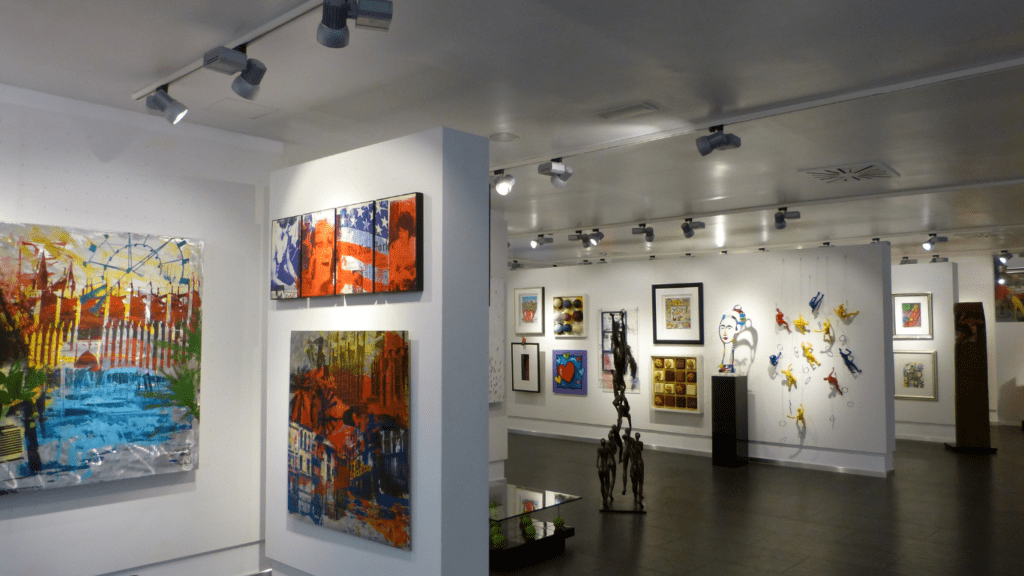The Evolution of Contemporary Art
Contemporary art has transformed significantly from its roots in the mid-20th century. Initially, it drew heavily from abstract expressionism and pop art. These movements questioned traditional artistic boundaries and encouraged new forms of creative expression. Abstract expressionism focused on subjective emotional expression, while pop art embraced popular culture elements.
In the late 20th century, minimalism and conceptual art emerged. Minimalism emphasized simplicity through geometric forms and limited color palettes. Artists like Donald Judd and Dan Flavin became prominent figures in this movement. Conceptual art shifted the focus from aesthetic value to the idea behind the work, leading to groundbreaking pieces that often sparked debate.
Entering the 21st century, technology’s impact on contemporary art has been profound. Digital art, virtual reality, and interactive installations have become mainstream. Artists use software, 3D printing, and artificial intelligence to create pieces that challenge conventional definitions of art. For example, teamLab’s immersive digital environments have gained international acclaim.
The rise of eco-conscious art reflects the growing environmental awareness. Artists like Olafur Eliasson use sustainable materials and address climate change through their works. This trend highlights the intersection of art and activism, urging viewers to consider their ecological footprint.
Globalization has also influenced contemporary art. Artists incorporate diverse cultural elements, creating works that resonate with a broader audience. For instance, Ai Weiwei’s art blends Chinese heritage with contemporary issues, making powerful statements on human rights and freedom.
Contemporary art’s evolution reflects society’s changes and technological advancements. It continues to innovate and provoke thought, pushing the boundaries of what art can be.
Emerging Themes in Contemporary Art

Contemporary art’s evolution has introduced emerging themes that reflect current societal shifts and technological advancements. Here are key themes shaping today’s art scene.
Environmental Art
Environmental art addresses urgent ecological issues by engaging with nature and sustainability. Artists like Olafur Eliasson create installations using sustainable materials and natural elements. These works highlight the impacts of climate change, inviting viewers to reflect on their environmental responsibilities. Eco-conscious art often uses recycled or natural materials, reducing waste and promoting sustainability.
Digital Art
Digital art leverages technology to create novel forms of artistic expression. With advancements in software and hardware, artists now explore virtual reality, augmented reality, and digital installations. Notable digital artworks often incorporate interactive elements, allowing audiences to engage directly with the piece. Artists like Refik Anadol utilize data visualization, turning complex datasets into immersive experiences that push the boundaries of traditional art.
Political Art
Political art critiques and comments on social and political issues, offering a platform for marginalized voices. Artists like Banksy use their work to address issues like:
- inequality
- war
- social justice
Political art often employs stark imagery and provocative messages to spark dialogue and encourage societal change. It challenges viewers to confront uncomfortable truths and reconsider prevailing narratives.
Contemporary artists continue to innovate, blending themes of environmental awareness, digital innovation, and political critique to create works that resonate on multiple levels. Each theme reflects broader cultural dynamics, making contemporary art a vital commentary on our times.
Influential Contemporary Artists
Contemporary art thrives through the contributions of forward-thinking artists. Individuals like Ai Weiwei, Yayoi Kusama, and Banksy push boundaries in diverse ways.
Ai Weiwei
Ai Weiwei, a prominent Chinese artist and activist, critiques social injustices and government corruption through his art. Recognized globally, his installations and sculptures often embed political messages. For instance, “Sunflower Seeds,” displayed at the Tate Modern, featured millions of handmade porcelain seeds, challenging the concept of mass production. Ai’s work integrates traditional Chinese craftsmanship with modern themes to highlight human rights abuses and advocate for freedom.
Yayoi Kusama
Yayoi Kusama, a Japanese artist, captivates audiences with her immersive installations. Renowned for her polka dots and infinity rooms, Kusama’s work delves into themes of identity and psychological trauma. “Infinity Mirrored Room – The Souls of Millions of Light Years Away,” an installation at The Broad, uses mirrors and LED lights to create the illusion of infinite space. Kusama’s distinctive style and exploration of repetitive patterns reflect her mental health struggles and lifelong artistic passion.
Banksy
Banksy, an anonymous British street artist, uses graffiti to make powerful political and social statements. Known for his satirical and provocative pieces, Banksy addresses issues such as war, consumerism, and inequality. The piece “Girl with a Balloon,” which self-destructed immediately after auction, highlighted the commercialization of art. Banksy’s anonymity and clever execution of public murals continue to captivate and provoke discussion, making him a significant figure in contemporary art.
The Role of Technology in Contemporary Art
Contemporary art has actively embraced technology. Artists explore new frontiers by integrating digital tools and platforms that reshape creative expressions.
Virtual Reality
Virtual reality (VR) has transformed the art world. It allows immersive experiences that engage viewers in novel ways. VR art installations create interactive environments where audiences become part of the artwork itself. For example, artists like Marina Abramović use VR to transport viewers into alternate realities, expanding the boundaries of traditional art forms. The result is a dynamic interface between the observer and the art, enhancing emotional and sensory engagement.
Artificial Intelligence
Artificial intelligence (AI) influences contemporary art by introducing machine learning and algorithms into the creative process. AI-generated art challenges traditional notions of authorship and creativity. Artists like Mario Klingemann use AI to generate novel artworks, blending human creativity with computational capabilities. AI’s ability to analyze vast datasets allows for the creation of complex patterns and designs, providing artists with new tools to explore uncharted artistic territories.
The Market for Contemporary Art
Contemporary art attracts global attention, offering diverse platforms for artists to showcase their works. Key players include galleries, exhibitions, art fairs, and auctions, each vital in shaping the contemporary art market.
Galleries and Exhibitions
- Galleries play a crucial role in the contemporary art scene by providing accessible venues for artists to exhibit their works.
- Major galleries like Gagosian and David Zwirner represent many contemporary artists, often showcasing their works in both permanent and rotating exhibitions. These exhibitions help artists gain visibility and allow collectors to discover and purchase new artworks.
- Most exhibitions integrate various media forms like digital installations, paintings, and sculptures, reflecting contemporary trends.
- Exhibitions often highlight emerging trends in the contemporary art landscape. For instance, the focus on immersive art experiences has led to an increase in large-scale interactive installations, drawing in a wider audience.
- Exhibition spaces adapt by incorporating advanced technologies, like augmented reality, to enrich visitor engagement. These galleries influence market trends through curated shows and solo exhibitions, positioning themselves as trendsetters in contemporary art.
Art Fairs and Auctions
Art fairs and auctions serve as significant marketplaces for contemporary art. Major events like Art Basel and Frieze Art Fair set the stage for artists, collectors, and galleries to interact, share, and trade. These fairs often feature both established and emerging artists, providing a comprehensive overview of current market trends and innovations.
Top auction houses like Christie’s and Sotheby’s are instrumental in the valuation and sale of contemporary artworks. They organize themed auctions that highlight significant movements or artists, drawing significant attention and high bids. For example, record-breaking sales of works by artists such as Jeff Koons and Jean-Michel Basquiat at auctions demonstrate the high demand and investment potential in contemporary art.
Through these platforms, the contemporary art market remains dynamic and continuously evolving, reflecting broader cultural and technological shifts.




